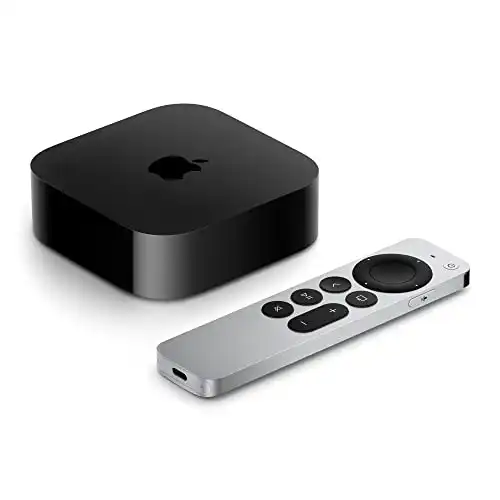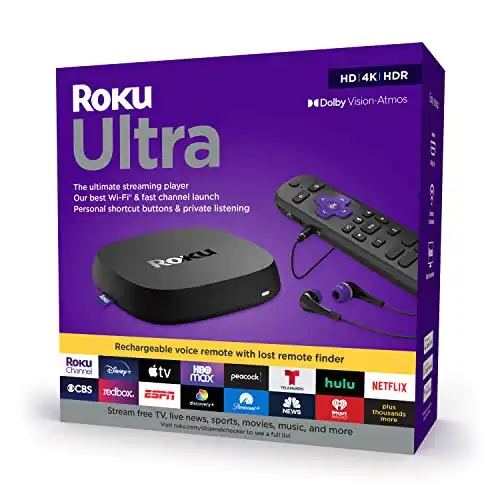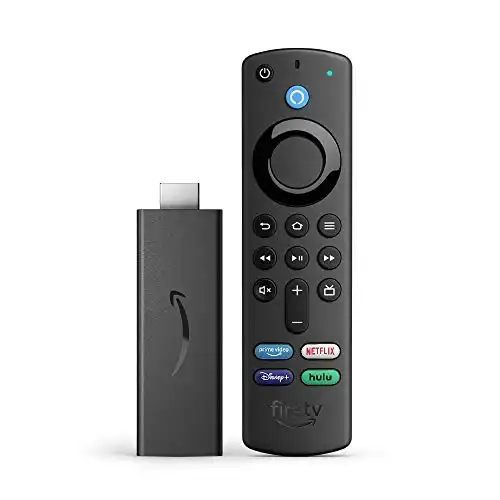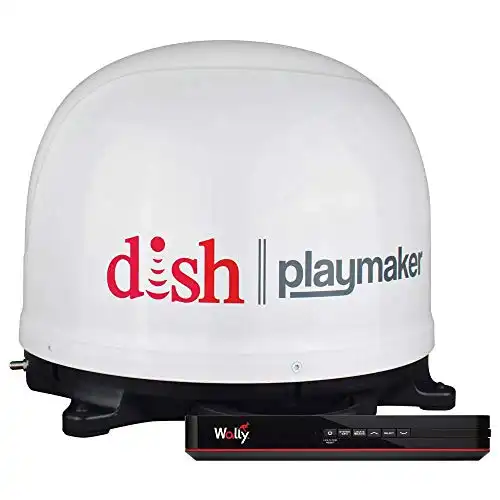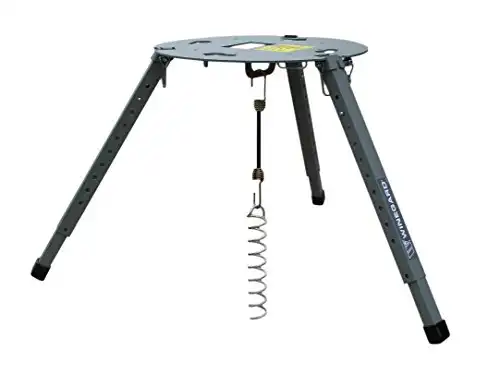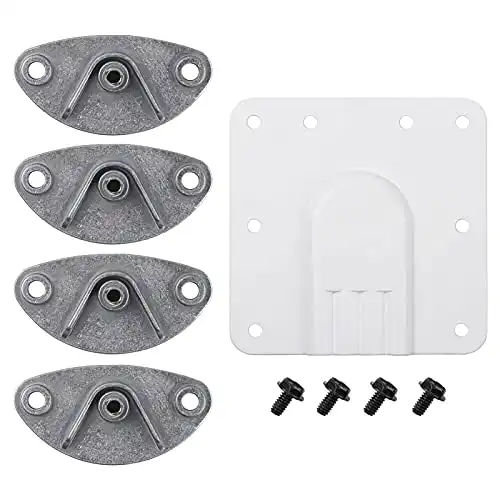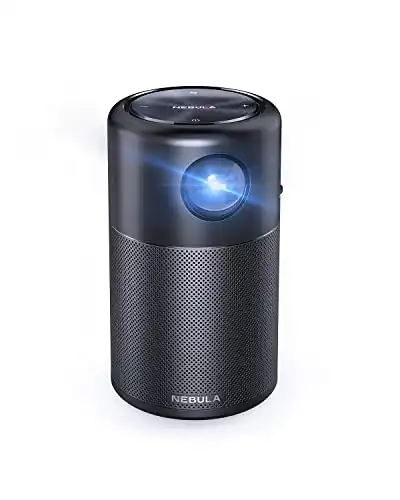Let’s face it, after a long day of camping, relaxing while watching your favorite TV shows or a movie in the evening or on rainy days is a perk many of us appreciate. Most new RVs come with a robust entertainment system designed for doing just that. However, figuring out the best way to watch TV when camping can be challenging. Luckily, in today’s day and age, you have plenty of options to create a TV experience as you have at home.

Watching TV while at the campsite may take a few extra steps, but with the right technology, you can watch almost anything you want, whether connected to Wi-Fi, boondocking in a remote location, or completely off the grid. In fact, I recently conducted some research on internet needs while camping, and watching TV (or streaming shows) is one of the top reasons RVers want to be connected.
When it comes to watching television and camping, you have several options. But first, you must decide how best to get the show or movie on your TV. Luckily, there are dozens of ways to do this, which we’ll cover below.
The best methods of watching TV when camping include:
- Use a digital antenna: Most RVs are pre-equipped with a digital antenna designed to receive over-the-air stations directly to your RV TV. So while you’ll only have access to broadcasts within your range, you may have access to major networks like ABC, Fox, NBC, CBS, PBS, and local stations.
- Streaming Device: A streaming device uses an internet connection to access hundreds of video providers through apps and services. Many apps require a paid subscription, but dozens of popular services are available for free and provide a broad range of video content. However, free services typically show ads to support the content.
- Satellite TV: Satellite television is still extremely popular and provides the same service you can get at home in your RV. Satellite service requires a paid subscription but will not require an internet connection to access the videos. RVs are often pre-equipped for connecting a satellite dish to the RV, making the connection simple. Satellite antennas come in all different configurations, with many good options made exclusively for RVers. A Satellite provider can recommend an excellent portable satellite dish for their service.
- Cable TV connection: Many campgrounds will offer free or paid access to traditional cable TV. Most RVs come prewired for a cable TV connection, meaning if you have access to this service at your campground, you can connect a coaxial cable to your RV and watch the TV channels provided.
- DVDs: Most RVs with an entertainment system will come with a DVD player. DVDs are a great option when you don’t have access to an internet connection or satellite and cable TV. DVDs are also easy to rent at kiosk locations like Redbox, located in most parts of the country. In addition, many Walmart locations will also have kiosks available where you can rent DVDs.
Over the Air Antenna
If you were born last century (wow- that sounds weird), you are likely familiar with a TV antenna used for receiving television broadcasts over the air for free. These broadcasts are still as active as they were in the past, but with added improvements.
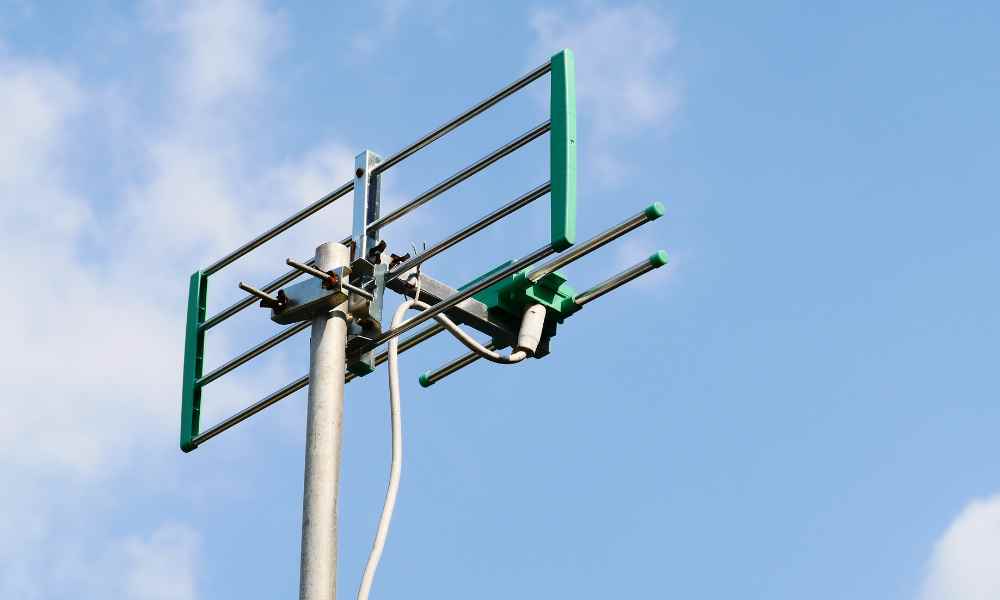
Unlike in the past when broadcasts were made using an analog signal, today’s over-the-air broadcasts are all digital. This means you can receive high-definition TV signals with just an antenna. In fact, after 2009, all broadcasts are required to be digital. With digital tv reception, it’s usually all or nothing. You won’t get fuzzy pictures like in the past, but if you have access to the signal, you should get crystal-clear picture quality. While old TVs require a set-top box, a newer TV set should have a built-in digital converter.
If you are located within range of a television broadcasting antenna, you may be able to receive free television with nothing more than the antenna likely included with your RV. This is a great way to save costs and get basic live TV in your RV. However, you will be restricted to your area’s local public TV stations.
To watch TV in an RV using an antenna, you need to follow these steps:
- First, determine the type of antenna you have in your RV: It’s very likely that your RV already has a digital antenna capable of receiving over-the-air channels. If not, you can purchase a digital TV antenna and connect it directly to your TV. A more powerful antenna can pick up a station from farther away.
- Connect the antenna to your TV: If you have a built-in antenna, it’s probably already connected to your RV wiring and TV. If not, most portable antennas come with a coaxial cable that you can use to connect the antenna to your TV. Simply plug one end of the cable into the back of the antenna and the other end into the “Antenna In” port on the back of your TV.
- Scan for channels: Once the antenna is connected to your TV, you need to scan for channels. This process will allow your TV to find all available channels in your area. To do this, go to your TV’s settings and look for the “Channel Scan” or “Auto-Tune” option. Follow the on-screen instructions to complete the scan. On some TVs, you may need to select your connection type (cable TV, Over the Air (OTA), HDMI, etc.). You want to select OTA if available.
- Once your TV finishes scanning the available channels, you should be able to rotate through them by selecting the channel up and down button. Of course, you may only receive a few channels or none at all.
What TV stations are available with an antenna?
The TV stations available with an antenna will depend on your location and the strength of the signal in your area. In general, you can expect to receive local network affiliates such as ABC, CBS, NBC, and FOX and public television stations like PBS. You may also be able to receive other local stations, such as independent or foreign language channels. More broadcasts are typically available the closer you are to a city.
To find out which TV stations are available in your area, you can use a tool such as TV Fool or AntennaWeb. These tools will show you the available channels in your location based on your address and the type of antenna you have. You can then use this information to fine-tune your antenna’s position and get the best reception possible.
Streaming Devices
There are dozens of devices readily available designed to stream tv and movie content directly from the internet to a television set. Most people reading this have one or more of these devices at home. A streaming device uses an internet connection to access videos made available from different providers through apps and services. While the most common streaming services like Netflix, Amazon Prime, Disney, HBO Max, and Apple TV are common household names, hundreds more are offered by almost every television network, allowing you to watch your favorite show. In fact, the pure vastness of available apps and services can be overwhelming.
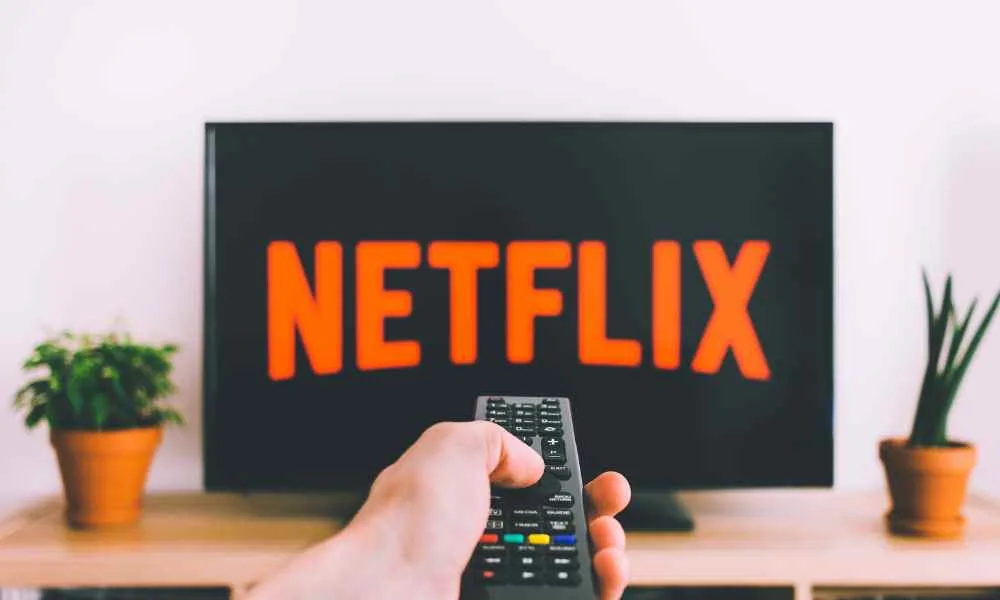
While many available services offer an al-a-cart offering, meaning you can pay for access to the specific app or service, some may be included in a bundled service, often through your cable television provider. So if you have cable TV at home, ask your provider if you have access to various streaming services or how much it costs to add them to your subscription plan.
While we won’t cover all of the services available in this article, it’s essential to know that they exist and will feed the content for streaming TV while you’re camping. A streaming service is usually the easiest way to watch TV when camping.
Best Streaming Devices
There are several popular streaming devices available on the market. All will provide access to an app store where you can download your favorite content provider apps (TV stations, Netflix, Prime Video, etc.). They will all connect to your RV television through an HDMI port. The most popular ones are:
- Apple TV
- Google Chromecast
- Roku
- Amazon Fire TV Stick
- Smart TVs
While other devices are available, the above are the most common and work well, requiring intuitive controls and easy setup. In addition, they will all have access to the most popular streaming apps and services.
However, for these devices to function, they need to be connected to the internet. Since reliable internet is not always available at campgrounds, this is usually the most challenging part of watching TV when camping.
How do you get an internet connection when camping?
There are several ways to get an internet connection when camping. Some are more reliable than others. While you may be able to purchase access or get it for free at a campground, internet speeds are typically slow, which makes video streaming hit or miss. You can create a hotspot from your phone with a reliable cellular data connection. Still, you need to be aware of data limits and overages, which you can quickly exhaust when streaming video.
Below are some available options for getting an internet connection when camping.
Mobile Hotspot
Many smartphones and tablets have a mobile hotspot feature that allows you to share your mobile data connection with other devices. To use this feature, you will need to have a data plan with your mobile service provider and be in an area with cell phone coverage. If you don’t have this option, most cellular providers will allow you to add it for an extra cost.
How do you create a Wi-Fi hotspot from your phone?
Most smartphones make it easy to create a mobile hotspot (or internet connection) utilizing the data plan provided by your phone. However, before you attempt this, check with your carrier to see if you have a data plan that allows this and your data limit. Most plans will restrict the amount of data you can use via a mobile hotspot, even if you have unlimited data on your mobile device. It can also get costly to pay for data overages if you’re not careful.

To create a Wi-Fi hotspot from your phone, you will need to follow these steps:
- Enable mobile data: You need to have a mobile data plan with your phone service provider to create a Wi-Fi hotspot. Make sure your mobile data is turned on, and you have a good signal.
- Enable hotspot: Most smartphones have a hotspot feature that allows you to share your mobile data connection with other devices. To enable this feature, go to your phone’s settings and look for the “Mobile Hotspot” or “Tethering and Mobile Hotspot” option. On an iPhone, this is found under the cellular settings. In addition, you should be provided an option to set a password. It’s important to set one, so others in the campground don’t connect to your phone and use your data.
- Connect device: Once created and enabled, open your streaming device settings and search for available Wi-Fi networks. If you set it up correctly, you should see it as an available option. You can connect to it from your device and log in with the password you created. Connect other devices: Once the hotspot is enabled, you can connect other devices by selecting the hotspot’s name from the list of available Wi-Fi networks. Again, you may need to enter a password to connect.
Since you’ll be using your cell phone data plan, it’s important to mention that consuming a lot of data is easy, especially if streaming videos. Also, your connection speed will depend on the cell phone connection. For example, while 4G cellular connections are adequate for streaming video, a 5G connection will be much better. Also, if you don’t have many bars available, your connection will be slower and may make video streaming painfully slow or not even possible.
Satellite internet service
Until recently, satellite internet was a costly and unreliable option for connecting to the internet. However, in recent years, Elon Musk rolled out Starlink, a high-speed and affordable satellite internet provider. While it’s still not available everywhere, it’s one of the best ways to connect to the internet if you’re not connected to the grid.
High-speed, low-latency broadband internet in remote and rural locations
across the globe. $110/mo with a one-time hardware cost of $599.
Starlink has an RV plan available, allowing you to access high-speed internet when traveling. Of course, you have to purchase the satellite and modem equipment from Starlink and pay a monthly service fee, but in many instances, you’ll have high-speed internet as you do at home.
Campground Wi-Fi network
Some campgrounds and RV parks offer public Wi-Fi networks that you can use to get online. However, these networks may have usage limits or fees, and the connection quality can vary. Personally, campground Wi-Fi quality has been hit or miss for me. While free Wi-Fi at the campground has been extremely slow, paid hasn’t always been much better.
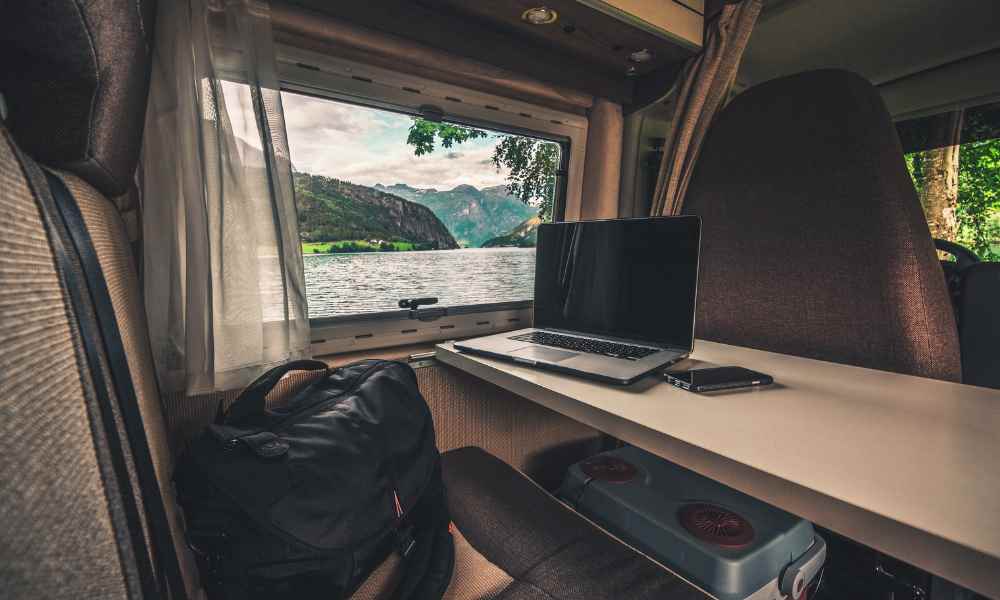
The allocated bandwidth is typically very slow, even when I get a strong signal. However, this can change from campground to campground. As more campgrounds embrace the demand from campers for fast internet, we will likely see services improve. The newer and more modern campground will usually have better Wi-Fi networks.
If you need a reliable internet connection when RV camping and plan to utilize the services offered by the campground, it’s wise to do some research, read reviews, or call the campground before you book. This is the only want to ensure you have the required connection speed.
Be aware of data usage.
How much data does streaming a video consume?
The amount of data that a streaming video consumes will depend on several factors, including the resolution of the video, the length of the video, and the streaming service you are using.
As a general rule of thumb, you can expect to use around 1 GB of data per hour of standard definition (SD) video, 3 GB per hour of high definition (HD) video, and up to 7 GB per hour of ultra-high definition (UHD or 4K) video. However, these estimates can vary greatly depending on your specific video and streaming service.
To get a more accurate estimate of the data usage for a specific video, you can check the video’s settings or consult the streaming service’s documentation. Some streaming services also offer tools or settings that allow you to adjust the video quality or limit data usage, which can help you manage your data usage. Also, some cell phone plans will offer unlimited streaming on your device, but this may not apply when casting to a TV or setting up a mobile hotspot.
Airplay, Casting, and Phone Mirroring
How do you wireless stream content from your phone to TV?
Another popular option to watch a show or movie on the TV is to stream it directly from your phone or mobile device. This is an alternative to using a built-in app for the streaming box. To wirelessly stream content from your phone to a TV, you need to use a device or service that supports screen mirroring or casting. Here are some options you can try:
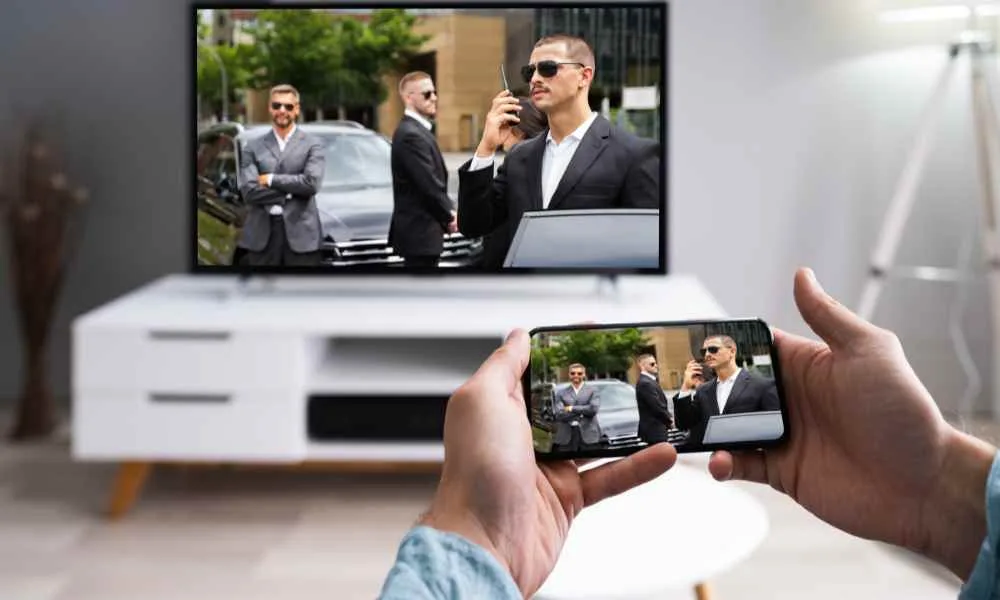
- Use a smart TV: Many modern TVs have built-in support for screen mirroring or casting, which allows you to stream content from your phone to the TV wirelessly. To do this, you will need to connect your phone and TV to the same Wi-Fi network and use the screen mirroring or casting feature on your phone.
- Use a streaming device: Streaming devices such as a Chromecast, Apple TV, or Roku allow you to stream content from your phone to your TV. To accomplish this, you will need to install the streaming app on your phone and connect the device to your TV using an HDMI cable.
- Use a wireless display adapter: A wireless display adapter is a small device that plugs into your TV and allows you to stream content from your phone to the TV wirelessly. To use a wireless display adapter, you need to connect it to your TV and follow the manufacturer’s instructions for pairing it with your phone.
- Use a streaming service: Many streaming services, such as Netflix, Hulu, or Amazon Prime, allow you to stream content from your phone to a TV using their app. To do this, you must subscribe to the service and connect your phone and TV to the same Wi-Fi network.
While getting different phones to work with different casting protocols can still be frustrating, it’s usually easiest to find the best one that works for your mobile device. For example, I find that iPhones work flawlessly with an Apple TV box. On the other hand, android phones work better with an android box like an Amazon Firestick or Chromecast device.
Every phone manufacturer wants you to use their services, which is why they make the casting experience seamless with specific devices. Others can sometimes be a little more cumbersome. However, there are workarounds for almost any scenario, but if you want something that works without any hassle, try to match up your phone with the device. I also find that Roku devices seem to be the best of both worlds, offering relatively easy connections with both iPhones and Android phones.
Downloading Content to your Phone
Many available streaming services offer the ability to download content for offline viewing. This means you can download a show when you’re connected to the internet and watch it when you’re not. This is very convenient and something I use all the time when camping. There is one caveat, though. Many services won’t allow you to cast your downloaded TV show or movie to a TV when it’s downloaded.
What streaming services offer the ability to download shows and movies?
Several streaming services offer the ability to download shows and movies for offline viewing. Here are a few popular options:
- Netflix: Netflix allows you to download shows and movies on its mobile app for offline viewing. You can download a limited number of titles at a time, and the downloads will expire after a certain amount of time.
- Hulu: Hulu allows you to download select shows and movies on its mobile app for offline viewing. The availability of titles for download may vary.
- Amazon Prime Video: Amazon Prime Video allows you to download shows and movies on its mobile app for offline viewing. You can download a limited number of titles at a time, and the downloads will expire after a certain amount of time.
- Disney+: Disney+ allows you to download shows and movies on its mobile app for offline viewing. You can download a limited number of titles at a time, and the downloads will expire after a certain amount of time.
- HBO Max: HBO Max allows you to download select shows and movies on its mobile app for offline viewing. The availability of titles for download may vary.
Remember that the available titles for download may vary by service and region. Some services may also limit the number of devices you can use to download content or the number of times you can download a specific title. There may also be limits on the number of downloads you can have at one time, meaning you may need to delete some content if you want to add new shows.
DVDs
There was once a time when the DVD was king. While DVDs have given way to online video, they are still a good option for watching shows and movies, especially if you’re on a tight budget and don’t want to pay for data or streaming services. I still watch DVDs regularly when camping, especially with a poor internet connection. The great thing about DVS is that you can typically find new movie releases for rent at DVD kiosks like Redbox, which can be found almost anywhere you camp. Redbox kiosks are located in over 40,000 nationwide and offer a wide selection of new releases, classic movies, and TV shows.

Also, if you have some favorite DVDs stored at home, consider keeping them in your RV as a backup option when you want to watch something but don’t have access to the internet or TV.
Cable TV connection
As you find in a hotel, many campgrounds will have direct hookups for cable at the campsite. When researching a campground, look on their website or call them to see if they offer this service. Some campgrounds may have it available for free, while others will charge a small fee.
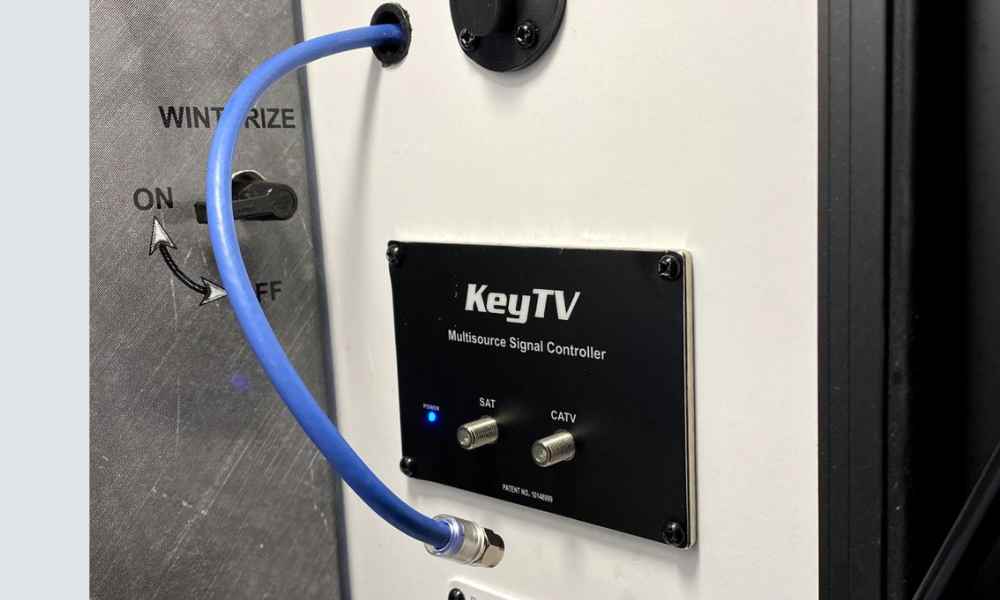
The channel lineup will vary from campground to campground, but you can expect to get the basic channels and a few cable networks at most resorts. If you like having access to live channels, this is a good option compared to investing in a satellite contract.
Satellite TV
What satellite TV providers are there?
Several satellite providers offer television services when using satellite dishes. Here are a few popular options:
- DIRECTV: DIRECTV is a satellite TV provider that offers a range of programming packages and features, such as HD and DVR services. DIRECTV is available in the United States.
- DISH Network: DISH Network is a satellite TV provider that offers a range of programming packages and features, such as HD and DVR services. DISH Network is available in the United States.
- HughesNet: HughesNet is a satellite internet and TV provider offering various programming packages and features such as HD and DVR services. HughesNet is available in the United States.
- Sky: Sky is a satellite TV provider offering various programming packages and features, such as HD and DVR services. Sky is available in the United Kingdom and Ireland.
|
Primary Rating:
3.5
|
Primary Rating:
3.5
|
Primary Rating:
3.5
|
|
$389.89
|
$89.99
|
$39.99
|
Note that satellite providers may vary by location and availability and may not be available in all areas. Some providers may also require a long-term contract or charge additional fees for installation or equipment rentals. Also, you will need to install an antenna with a clear sky view to get a good satellite signal.
The good news about the Satellite TV service is that it will provide the closest thing to cable TV anywhere, allowing you to catch your favorite shows when they air. You can also add special services like sports packages, including the NFL Sunday Ticket, MLB package, etc. Some satellite services will also allow you to set up a local service area and receive your local channels, regardless of where you’re camping.
How do you watch movies while tent camping?
If you’re camping in a tent, you can obviously watch a streaming show or downloaded video on your phone, tablet, or laptop. However, this isn’t always practical for a big group or if you want to watch something on a big screen. While you may be tempted to pack a TV, consider purchasing a portable projector. The process of projectors has dropped significantly, and they’re readily available at an affordable cost.
Many projectors have an HDMI input, meaning you can plug in most streaming devices, just like you would on a TV. Of course, you will need a screen to project onto, but in a pinch, you can project onto a sheet, the wall of your tent, or any other light-colored surface.
Conclusion
While some people choose to skip the TV when camping, but most enjoy having it as an option. There are many different ways to watch your favorite TV show or favorite movies while camping, and countless devices and gadgets that will help you do it. However, the simplest way is usually to use what you already have. This is typically a mobile phone and a streaming subscription for many people. If you already pay for a service at home, chances are you can use it while camping.
It’s a good idea to plan for your TV options before you leave for your next camping trip. Research the campground options for Wi-Fi, check reviews for cellular reception and pack whatever smart devices you need to get connected. Also, check if there is an additional cost for services like cable TV or Wi-Fi since that may impact your decision on what to use.
You may also want to download some shows on your phone apps while connected to high speed internet. This can save valuable data and ensure you have something to watch if reception is poor.
